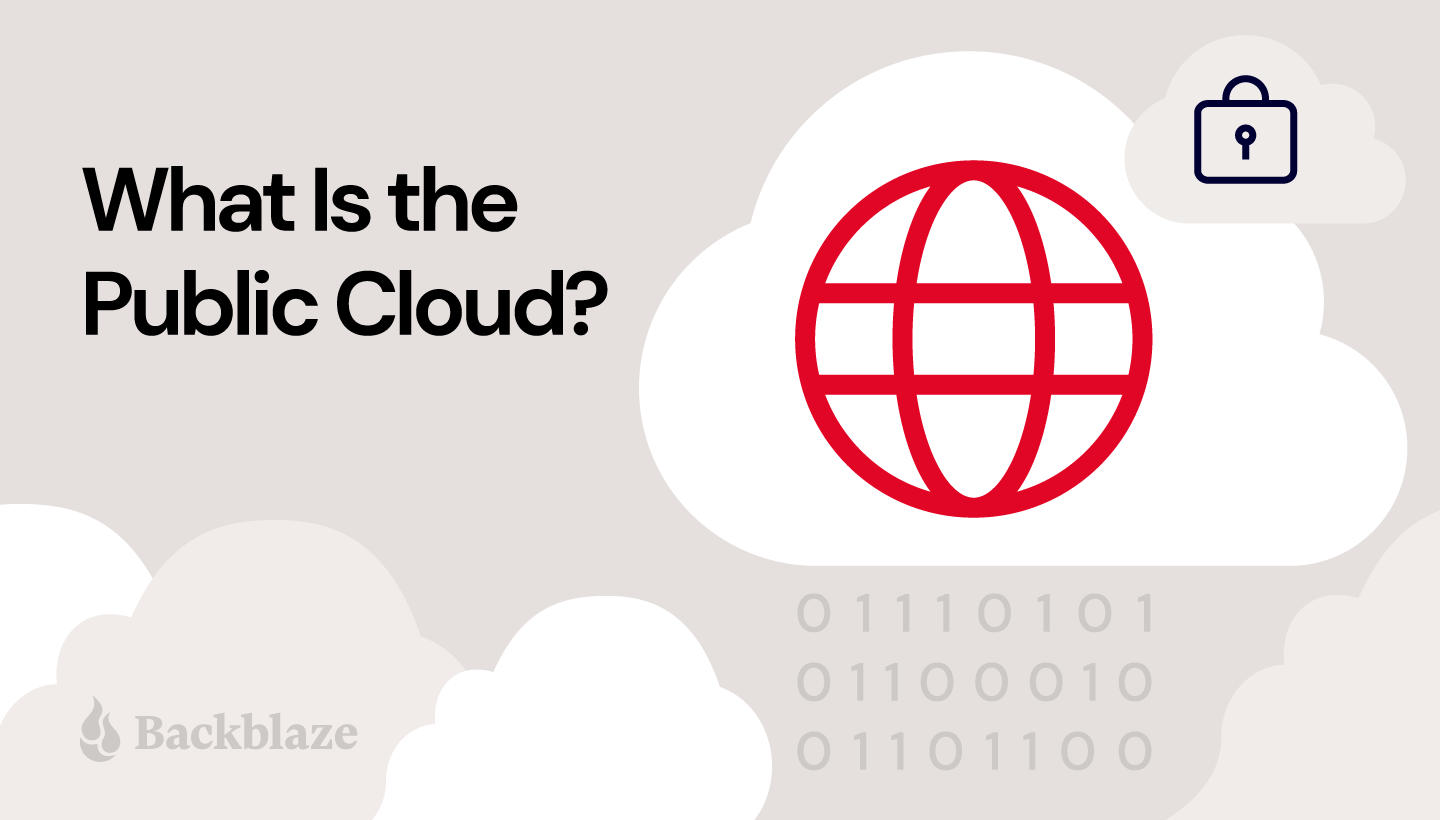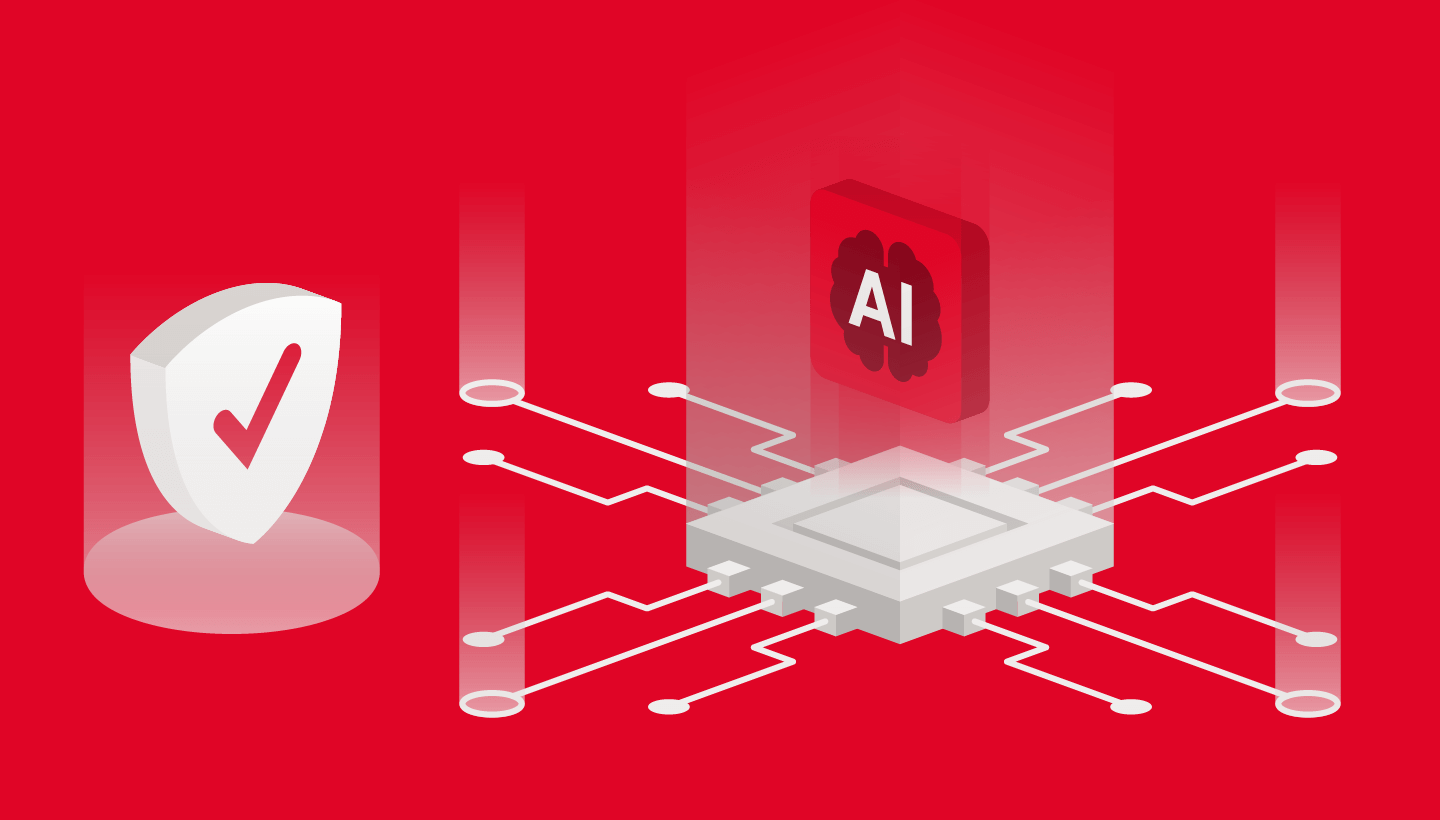
The wonderful thing about technology is that it’s always changing. This, of course, is also the frustrating thing about technology. We think we understand it, or at least have a basic grasp of it, and then the rules get completely rewritten. What seemed simple and straightforward is suddenly a morass of technical terms and jargon. Such is the case with cloud concepts.
If you’re looking for a data storage solution, it’s sometimes helpful to revisit the fundamentals to ensure you find the solution that works best for you. Today, we’re sharing a few helpful guidelines to cut through any confusion around the public cloud, including how it’s different from a private cloud, when it makes sense to use one or both, and how to go about choosing a cloud provider.
What Is the Public Cloud?
Essentially, public cloud storage operates like a self-storage unit, only one that holds your personal files instead of old lamps that you’re sure you’re going to donate or part with in a garage sale someday. The difference being (apart, obviously, from cloud storage being virtual) that cloud storage lets you pay as you go, so you only pay for the amount of storage you need.
In researching public cloud storage, you may come across other data storage terms such as “private cloud” and “on-premises.” We’ll briefly define these terms to help you navigate the options available to you.
- Private cloud. As the name implies, a private cloud is similar to a public cloud, but specifically designed for a single user or business. Think of a private cloud like one of those restaurant booths that’s permanently reserved for a VIP—no other customer can use that space. As a result, private cloud services can be more expensive than public clouds. Private clouds are typically, but not always, on-premises. Some companies choose to outsource their private cloud infrastructure to a data center, but the key defining factor is that the servers and network are dedicated to one company or “tenant” rather than shared with other tenants as in a public cloud.
- On-premises data storage. Before cloud services were created, many organizations stored their data in corporate data centers built on location or “on-premises.” Since these facilities are owned and controlled by the company that built them, they offer a very high level of security. On-premises data storage is also sometimes referred to as a private cloud, but private clouds don’t necessarily have to be on-premises anymore—they can be anywhere as long as they’re dedicated to one tenant.
There are several advantages to using a public cloud service for data storage. You generally only pay for the storage you use. Unlike an on-premises data center, there are usually no significant up-front costs to purchase hardware and plan for ongoing administration. In addition, a public cloud data storage solution does not take up physical space in your office.
Private Cloud vs. Public Cloud: When Does It Make Sense to Use Them?
To help you decide between public vs. private cloud data storage, let’s recap the critical differences first. A public cloud service is usually open to any customer, while a private cloud is dedicated to select users. In addition, a private cloud service is usually operated on-premises.
There are three significant differences between private cloud and public cloud.
- Tenancy. A private cloud is dedicated to one tenant whereas a public cloud is open to many tenants. In a public cloud, tenants share the same physical hardware resources as other tenants, and their individual instances are virtually separated so that one tenant can’t access another’s data.
- Approach to security. A private cloud is dedicated exclusively to your needs. You own and manage it. As such, you have more control over the physical security of your servers as well as your private networks. In a public cloud, you trust the provider to handle some of the security for you.
- Affordability. A public cloud service is defined to achieve mass economies of scale in order to offer affordable prices. A private cloud requires up-front investment in hardware and networking equipment and ongoing maintenance and upgrade costs.
Ultimately, it comes down to the solution that best fits your company’s needs for privacy and security balanced against your budgetary constraints. The benefit of a private cloud is more important in some industries than others. For example, in instances where there might be national security concerns—like national defense or government contractors—or a greater need for privacy like healthcare or financial services, a firm may opt to use a private cloud service located on-site for certain sensitive data.
Sometimes, however, your needs will extend beyond simply using either a private or a public cloud service. When that happens, you need a hybrid cloud.
Hybrid Cloud: When Does It Make Sense to Use Both?
As we noted, depending on your data storage needs and industry, you may decide to use a mix of public cloud and private cloud providers, otherwise known as a hybrid cloud. For example, in data-heavy industries like media and entertainment, a hybrid cloud approach offers a powerful solution. Using a hybrid solution means staff have fast access to large files for day-to-day work on a private, on-premises cloud, combined with scalable, affordable storage in a public cloud for archives and remote collaboration. Similarly, in industries that handle sensitive data, a private cloud could be used to have more control over security, while less sensitive data could be stored in a more affordable public cloud.
Using a combination of public cloud and private cloud data storage gives you the best of both worlds. Private, on-premises storage provides greater ease of access to files and enhanced security, but with the financial trade-off of fixed costs for maintenance and IT assistance. Public storage is more affordable and makes sharing files with outside vendors, subcontractors, and clients simpler.
How to Compare Public Cloud Providers
If you’ve decided a public cloud or a hybrid cloud approach is right for you, your next step is choosing a cloud provider as your trusted partner. As you evaluate different cloud providers, it is helpful to use some standard criteria to measure each provider. Use the following points of comparison to inform your selection process.
- Ease of use. As with most technology, the more customization you need, the less user-friendly your cloud storage is generally going to be. The end goal of cloud storage is to make your life easier, and if you’re having to stack new skill sets just to make it work, then you’ve officially moved beyond “easy.”
- Customer support. The insufferable thing about tech headaches is that they have no respect for your schedule. As such, it’s important to check the support package offered by the provider. How easy is it to reach an actual person, not a bot or autoresponder? Will they be able to respond to issues that may arise from your particular setup? The wrong answer could be costly.
- Data egress. Check the costs and speed of data egress if and when you need to pull all of your data out from the cloud provider. You don’t want to feel locked into a cloud provider because they charge high data transfer fees.
- Pricing tiers. There is no one-size-fits-all solution when it comes to cloud storage, so make sure you’re not throwing money out the window. Or, into the cloud. Double check that you won’t get locked into a price structure that charges for storage you don’t need. Keep an eye out for things like minimum retention requirements where you’re essentially charged for deleted data for a period of time after you delete it.
- Security. Lost or compromised data goes far beyond a mere inconvenience. In the worst-case scenario, it can represent a serious security breach and possible legal issue. Some cloud providers offer more security features than others. For example, check if the provider offers Object Lock, a feature that prevents data from being modified, copied, encrypted, changed, or deleted during a set period of time. If a bad actor somehow got access to your account, they wouldn’t be able to tamper with your data. (Even you can’t modify it before the lock period ends!)
Does Your Cloud Provider Support Cloud Replication?
Add redundancy, support compliance, and more with Backblaze Cloud Replication. Backblaze Cloud Replication is a new service that allows customers to automatically store and sync data in different locations—across regions, across accounts, or in different buckets within the same account. There are three main reasons you might want to use Cloud Replication:
- Data Redundancy: Replicating data for security, compliance, and continuity purposes.
- Data Proximity: Bringing data closer to distant teams or customers for faster access.
- Replication Between Environments: Replicating data between testing, staging, and production environments when developing applications.
Click here to learn more and get started today if you’re not yet a Backblaze B2 customer.
Assess Public Cloud Storage for Your Organization
Cloud computing has had a transformative impact on the way we do business. Between the cost savings and the flexibility it gives us in handling our data, it can play a tremendous role in your company’s growth. Now that you’ve learned the basics of public cloud data storage and how it can potentially impact your business, you can make a more informed decision about how you set up your infrastructure and manage your company’s important data.
Are you using a private cloud, a public cloud, or some combination of the two? Let us know in the comments. We’d love to hear how it’s going.




